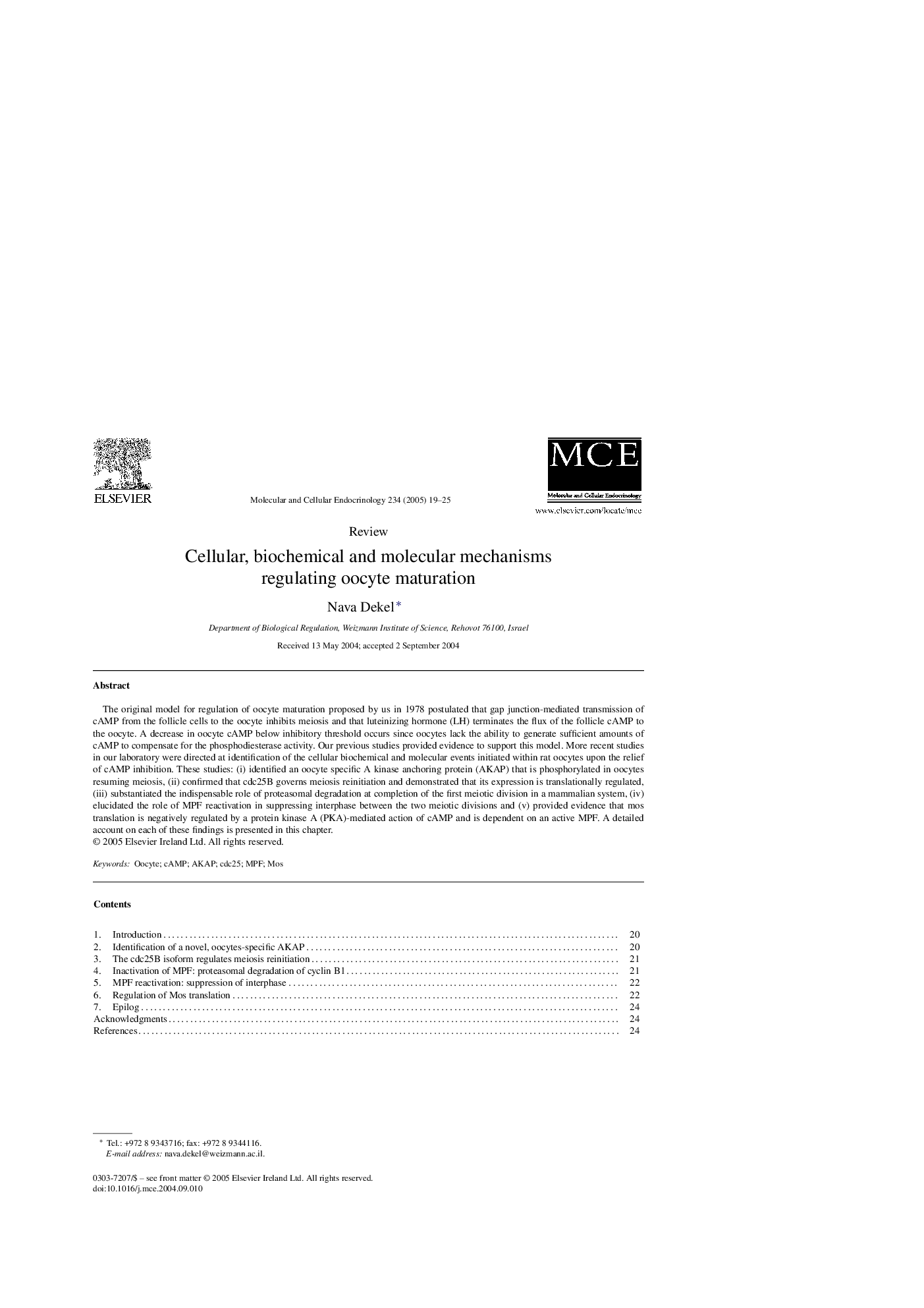| Article ID | Journal | Published Year | Pages | File Type |
|---|---|---|---|---|
| 9914985 | Molecular and Cellular Endocrinology | 2005 | 7 Pages |
Abstract
The original model for regulation of oocyte maturation proposed by us in 1978 postulated that gap junction-mediated transmission of cAMP from the follicle cells to the oocyte inhibits meiosis and that luteinizing hormone (LH) terminates the flux of the follicle cAMP to the oocyte. A decrease in oocyte cAMP below inhibitory threshold occurs since oocytes lack the ability to generate sufficient amounts of cAMP to compensate for the phosphodiesterase activity. Our previous studies provided evidence to support this model. More recent studies in our laboratory were directed at identification of the cellular biochemical and molecular events initiated within rat oocytes upon the relief of cAMP inhibition. These studies: (i) identified an oocyte specific A kinase anchoring protein (AKAP) that is phosphorylated in oocytes resuming meiosis, (ii) confirmed that cdc25B governs meiosis reinitiation and demonstrated that its expression is translationally regulated, (iii) substantiated the indispensable role of proteasomal degradation at completion of the first meiotic division in a mammalian system, (iv) elucidated the role of MPF reactivation in suppressing interphase between the two meiotic divisions and (v) provided evidence that mos translation is negatively regulated by a protein kinase A (PKA)-mediated action of cAMP and is dependent on an active MPF. A detailed account on each of these findings is presented in this chapter.
Related Topics
Life Sciences
Biochemistry, Genetics and Molecular Biology
Cell Biology
Authors
Nava Dekel,
